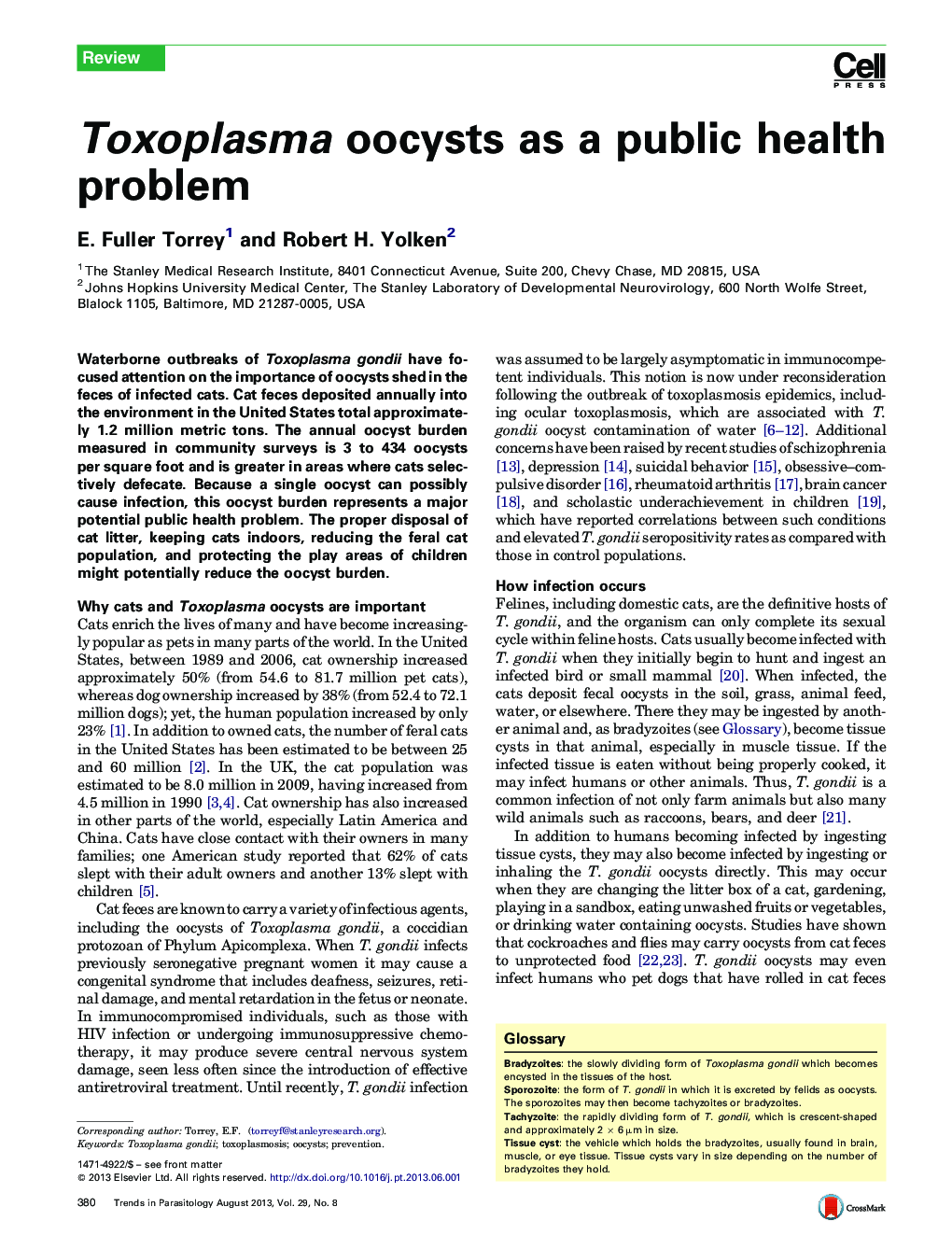| Article ID | Journal | Published Year | Pages | File Type |
|---|---|---|---|---|
| 3423024 | Trends in Parasitology | 2013 | 5 Pages |
•The annual environmental deposit of cat feces in the US is 1.2 million tons.•Toxoplasma gondii oocysts may remain viable for several years and thus accumulate.•In favored cat defecation sites, oocysts may accumulate in very high numbers.•The accumulation of T. gondii oocysts may be a major public health problem.
Waterborne outbreaks of Toxoplasma gondii have focused attention on the importance of oocysts shed in the feces of infected cats. Cat feces deposited annually into the environment in the United States total approximately 1.2 million metric tons. The annual oocyst burden measured in community surveys is 3 to 434 oocysts per square foot and is greater in areas where cats selectively defecate. Because a single oocyst can possibly cause infection, this oocyst burden represents a major potential public health problem. The proper disposal of cat litter, keeping cats indoors, reducing the feral cat population, and protecting the play areas of children might potentially reduce the oocyst burden.
